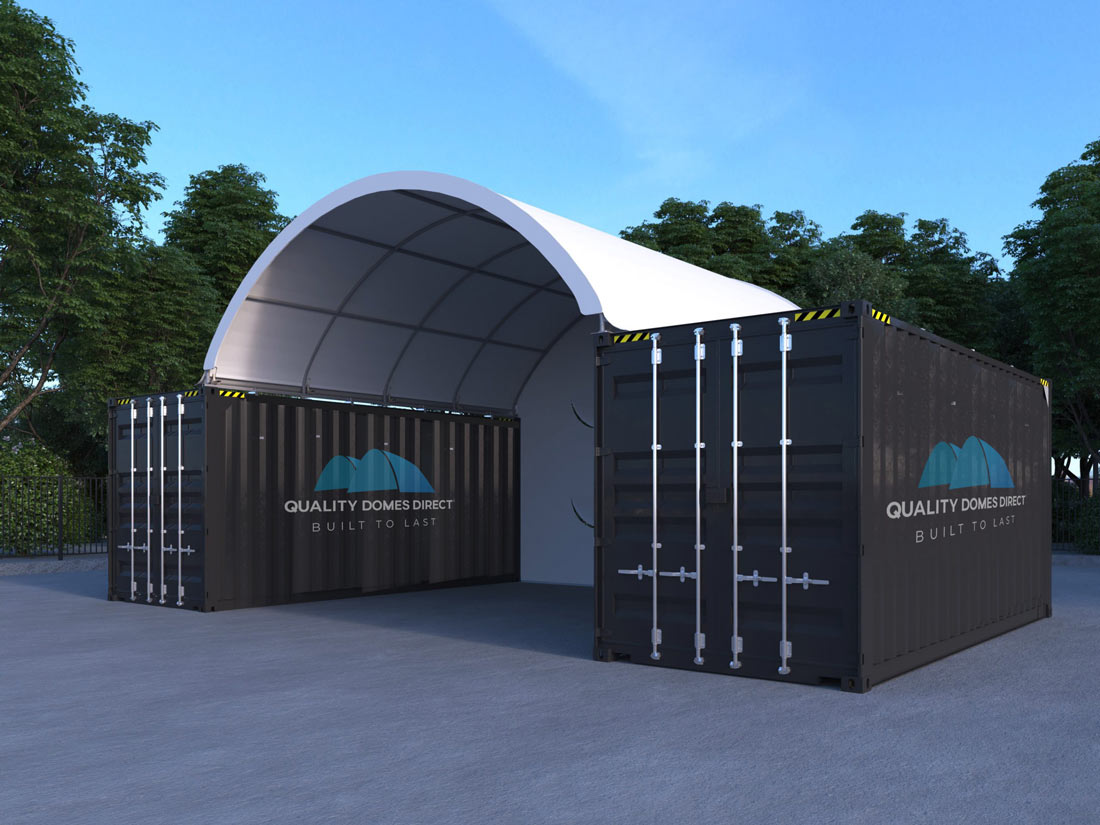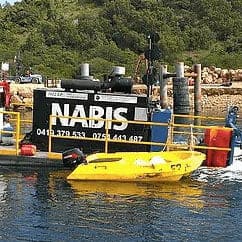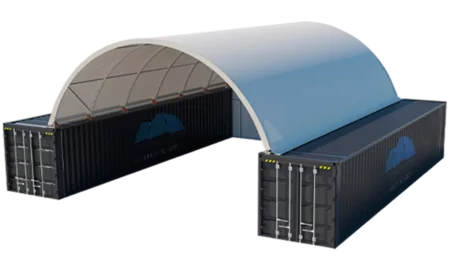Container Dome Shelter Foundations, Footings and Pier Design.
Are substantial foundations required when building a Shipping Container Domes Shelter?
Investing in a shipping container dome shelter is a big step in the evolution of a business. Installing a large steel-frame shelter signifies business growth and expansion, therefore it makes sense to make sure the shelter lasts and lasts – no matter what kind of weather is thrown at it.
While the flexibility of relocatable shelters allows for easy repositioning, there are critical moments when their stability is paramount. Severe weather, especially in coastal areas of Australia where cyclonic weather events take place can pose serious risks to the stability of a shipping container shelter. To ensure safety and compliance with Australian standards, it’s vital to implement robust anchoring and fixing solutions to secure shipping containers to a wide range of foundations such as concrete slabs, footings, re-enforced piers.
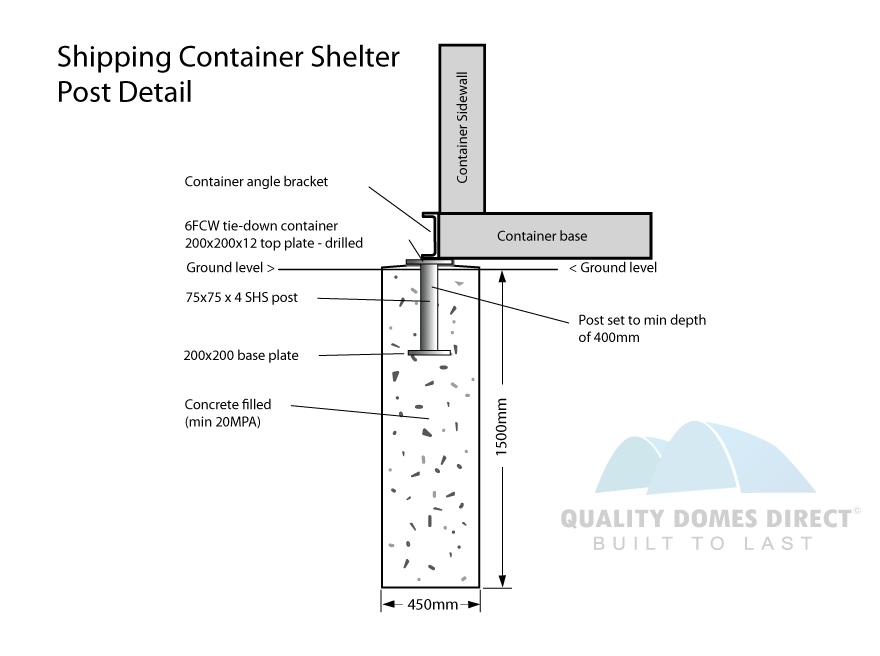
Types of Shipping Container Dome Shelter Foundations and Piers
When it comes to securing shipping container dome shelters securely to the ground, particularly those wider than six meters (12 feet), the importance of a solid foundation cannot be overstated. These structures must withstand various environmental challenges, especially in regions prone to extreme weather. The choice of foundation and anchoring method is stability and ensuring safety and compliance with Australian standards.
Unpredictable weather conditions such as high winds, summer hailstorms, cyclones and driving rain driven by extreme high and low weather patterns can threaten the integrity of a stee-framed container dome shelter. Considerations before building a shipping container shelter.
- Location: will the shelter be built in a high wind rated area, or erected in areas of high elevation, or close to hills?
- What is the construction method? Is it a shipping container set up, a post set and container setup or a standalone shelter and cover connected to steel posts and rails?
There are various methods of securing shipping containers to the ground. Here’s a breakdown of the most effective methods for anchoring a container dome shelter:
- Concrete Slab: A concrete slab poured beneath and between your containers offers a solid foundation. The containers can be secured to the concrete slab using brackets welded to the containers and Chemset (a multi-purpose, polyester adhesive for anchoring threaded studs and starter bars in solid materials) or bolted into to slab, ensuring they stay firmly in place. To ensure the container stays exactly where you need it, special ‘bolt-down’ brackets can slot into the corner casting blocks and be bolted to a concrete slab or even asphalt – securing the shipping container to the ground. This shipping container bolt down bracket is perfect for:
- Cyclone or high-wind areas of Australia Regions C and D
- Securing containers next to one another
- Preventing any horizontal, longitudinal or ever vertical movement of the container
- Concrete Footings: Ideal for larger shelters, concrete footings are a wise choice. They provide a sturdy foundation that can handle significant loads, especially when reinforced Reidbar is used.
- Piers: Piers are a robust solution involving drilled holes into the earth then filling it with concrete and Reidbar/mesh and long threaded bars which run the depth of the hole. These high-tensile, galvanised steel threaded rods can be terminated at the base with a T Bar for added strength. Using a template to accurately position the threaded bars into the bracket holes, line up the threaded rods to ensure perfect alignment when it comes to connect the brackets to the containers.
- Slab and Piers Combination: For maximum stability (especially when building larger shelters), it’s worth considering a hybrid approach where a concrete slab is poured between the containers, supplemented by piers along the outer edges of the containers allowing a combination of deep anchoring points all around.
- Ballast: If concrete foundations and piers are not an option, an internal solution using, ballast can be another solution. Although not as effective against strong winds as concrete footings, adding weight inside the containers can help – especially if the containers are not being used as a workshop or storage facility. The amount needed is calculated based on the shelter’s length, ensuring it remains stable even in high winds. Consult your local Council for recommendations.
- External Ballast: This method involves placing large concrete blocks or other heavyweight objects next to the containers and connecting them to the top edge of the shipping container. There are a few different methods to connect the blocks to the containers. Consider steel tube, thick chains which can be either bracketed or welded to the container and the opposite end embedded deep within the anchoring object. This external anchoring system can be highly effective in stabilizing your shelter.
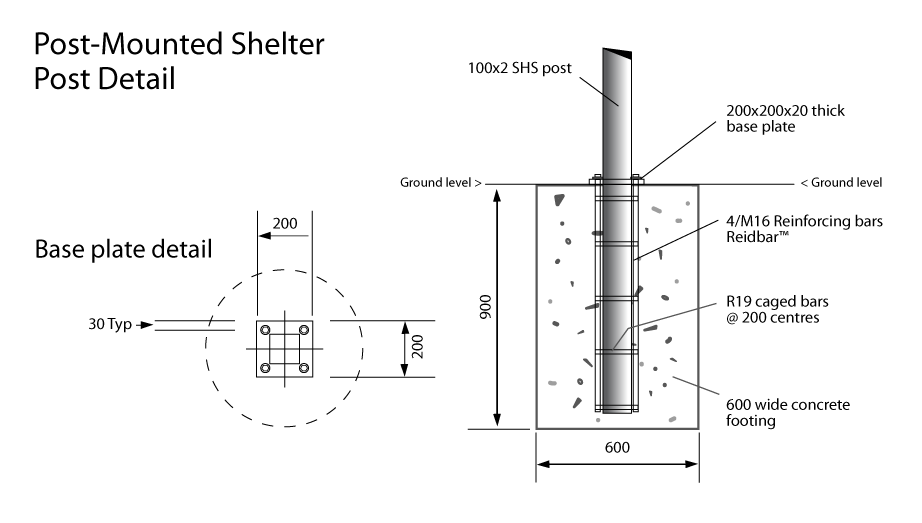
Key Considerations for Your Shelter Foundation
When determining which foundation type is best for your needs, keep these factors in mind:
- Shelter Size: Larger structures may require more robust foundations.
- Intended Use: Consider what activities will take place within the shelter.
- Type of Shelter: Different designs may necessitate specific anchoring solutions.
- Relocatable vs. Permanent Needs: If you anticipate moving your shelter, opt for temporary foundations.
- Soil or Surface Conditions: Assess the ground type where your shelter will be placed.
- Wind Exposure Levels: Higher exposure may require stronger anchoring methods.
Selecting the right choice of foundation
For shelters that will remain in one spot, permanent foundations are often the best. However, if flexibility is important—especially on rented land—temporary shelter foundation options may be work best. We recommend seeking the advice of your local council engineer because they can steer you in the right direction, ensuring that you choose a foundation that meets both safety standards and is compliant with the design (size, height, materials used) of the container dome shelter or post-mounted combination shelters with a PVC fabric roof.
By understanding these options and considerations, you can confidently secure your shipping container dome shelter against the elements whilst knowing you’ve done everything you can to increase the lifespan of the entire structure.
Links :
Shipping Container Dome Shelter Engineering – Quality Domes Direct
Galvanised Steel Shipping Container Dome Shelter Frames – Quality Domes Direct
